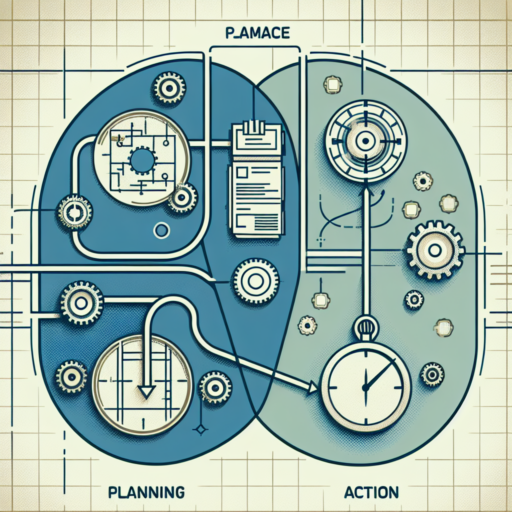Understanding 5K Pace: What You Need to Know
When it comes to running a 5K, one of the most crucial factors that affects your performance is your pace. Understanding and determining the appropriate pace for you can significantly enhance your running experience, as well as your finish times. Whether you’re a seasoned runner or new to the racing community, getting a handle on your 5K pace is imperative for accomplishing your personal goals. It involves a blend of science, strategy, and personal insight.
Firstly, calculating your current 5K pace is essential for setting realistic goals. This is done by dividing your total run time by the distance you’ve run. For many, this initial figure acts as a baseline to improve upon. Advanced runners might utilize this data for more intricate training regimes, focusing on speed work and tempo runs to enhance their pace progressively. Beginners can focus on consistency, gradually increasing their running intervals while taking walks as necessary, always with an eye on reducing their pace bit by bit.
Furthermore, understanding the factors that influence your 5K pace is important. Elements such as your current level of fitness, running conditions, and even your mental state can have a profound impact on your performance. By acknowledging these aspects and planning your training around them, you can develop a more effective and enjoyable running plan. For example, improving your cardiovascular endurance through cross-training or adjusting your running strategy based on weather conditions are ways to fine-tune your 5K pace.
Starting Your 5K Right: Ideal Warm-Up Strategies
Embarking on a 5K run requires not just determination and training, but also a proper warm-up to prime your body for the challenge ahead. Warming up increases your muscle temperature, enhances flexibility, and decreases the risk of injuries, thus ensuring you start and finish strong. Let’s discuss the ideal warm-up strategies to kickstart your 5K journey the right way.
Dynamic Stretching: The Key to Flexibility
Dynamic stretches are vital for preparing your body for the range of motion and effort involved in a 5K run. Unlike static stretching, which involves holding a stretch for a period, dynamic stretching involves movement-based stretches that mimic the running motion, thereby preparing your muscles in a more functional way. Incorporating exercises such as leg swings, arm circles, and lunges can effectively warm up your body and boost your flexibility.
Engage in a Light Cardio Routine
Beginning your warm-up with a light cardio routine helps in gradually raising your heart rate and increasing blood flow to your muscles. A brief 5 to 10-minute jog or brisk walk before the run is ideal. It serves as a transition from rest to activity, reducing the shock to your system and minimizing the risk of injury. This approach ensures that your body is not only flexible but also energized and ready for the endurance challenge ahead.
Implementing these warm-up strategies effectively sets the stage for a successful and enjoyable 5K run. By focusing on dynamic stretching and a gentle cardio warm-up, you’re not just preparing your body physically but also mentally gearing up for the task at hand. Remember, a proper warm-up not only enhances your performance but also plays a crucial role in injury prevention.
Setting Your Pace: How to Calculate Your Ideal 5K Speed
Calculating your ideal 5K speed is an essential part of setting realistic goals and improving your running performance. Whether you’re a beginner looking to complete your first race or an experienced runner aiming to set a new personal record, understanding how to determine the right pace can make a significant difference. This involves considering various factors, such as your current fitness level, running experience, and race conditions.
Understanding Your Current Fitness Level
Assessing your current fitness level is the first step in calculating your ideal 5K speed. This can be done by evaluating your recent running performances or conducting a time trial over a shorter distance. By analyzing your results, you can gain insights into your aerobic capacity and determine a baseline pace. Remember, improvement comes with time and consistent training, so be patient and avoid setting unrealistic expectations that may lead to disappointment or injury.
Setting Realistic Goals
Once you have a grasp on your current fitness level, the next step is to set realistic goals. If you’re a beginner, aim for a steady pace that challenges you without pushing you to the brink of exhaustion. For seasoned runners, consider your previous 5K times and adjust your goal accordingly to reflect improvements in speed and endurance. Utilizing pace calculators and training plans can also provide a structured approach to achieving your target time.
Breaking Down the Race: Segment Strategies for 5K Success
Understanding the dynamics of a 5K race is crucial for runners aiming for success, regardless of whether it’s their first or fiftieth race. This mid-distance challenge requires a blend of speed, stamina, and strategic pacing. By breaking down the race into segments, runners can better manage their energy, pace, and ultimately, their performance. Implementing segment strategies tailored to the specific demands of a 5K can lead to significant improvements in finishing times and overall race experience.
Starting Strong: The First Kilometer
The initial stage of the 5K is about finding your rhythm without expending too much energy. It’s tempting to start off at a sprint, especially with the adrenaline pumping and the crowd cheering. However, a measured approach focusing on maintaining a steady and sustainable pace is key. Runners should aim for a pace that feels comfortably challenging, setting the stage for the rest of the race without overextending.
Maintaining Momentum: Middle Kilometers
As runners settle into the race, the middle kilometers offer a chance to build on the steady start. This is the time to focus on consistent pacing, ensuring not to drop off too much from the initial speed. It’s also crucial to stay aware of your body’s signals during this segment, adjusting your pace as needed to conserve energy for the final push. For many, this is a mental game as much as it is physical, maintaining focus and determination through these middle stages.
The Final Push: Last Kilometer to the Finish
The last kilometer is where the race strategy culminates in a crucial test of endurance and willpower. This is the moment to gradually increase your pace, using any reserved energy to finish strong. Many runners employ a final sprint strategy in the last few hundred meters, but the key is to increase intensity at a rate that you can sustain until the finish line. Balancing the desire to push hard with the reality of your physical limits is essential for a triumphant conclusion to your race.
The Role of Breathing in Your 5K Pace Strategy
Understanding the pivotal role of breathing within your 5K pace strategy can significantly elevate your running performance. Proper breathing techniques not only enhance oxygen delivery to your muscles but also aid in maintaining a consistent and sustainable pace. This facet of running is often underestimated, yet mastering it can lead to impressive gains in both endurance and speed.
Firstly, integrating diaphragmatic breathing, or belly breathing, is essential for maximizing oxygen intake. This technique ensures that you’re utilizing the full capacity of your lungs, allowing for a greater volume of oxygen to be transported to your muscles. The rhythmic pattern of deep inhales and exhales also plays a critical role in setting a sustainable pace, enabling runners to maintain efficiency over the distance of a 5K.
To optimize your breathing strategy, practice exercises that focus on controlling breath patterns during runs. Techniques such as the ‘2:2 rhythm’—inhaling for two steps and exhaling for two steps—can significantly impact your ability to maintain pace and improve overall performance. This rhythm not only helps in regulating your stride but also assists in keeping a balanced and steady heart rate, an essential factor for long-distance running.
Mental Preparation: Tips for Maintaining Focus and Pace
Mental preparation is crucial for achieving peak performance in various aspects of life, be it in academics, professional endeavours, or personal goals. Mastering the art of maintaining focus and setting a consistent pace can seem daunting, but there are practical strategies that can make this journey more manageable. In this section, we delve into some of these tips that can help you in staying mentally prepared and maintaining your focus and pace.
Establishing Clear Goals
Setting clear, achievable goals is the foundation of mental preparation. It’s essential to know what you’re aiming for if you wish to maintain focus and a steady pace. Break your main objective into smaller, manageable tasks and set specific benchmarks for progress. This approach not only makes your goal seem more attainable but also provides a clear roadmap that helps in maintaining focus and measuring your pace.
Practicing Mindfulness and Meditation
Engaging in mindfulness and meditation can significantly enhance your ability to remain focused. By practicing mindfulness, you train your brain to stay present in the moment, which is essential for maintaining concentration over long periods. Meditation, on the other hand, helps in reducing stress and anxiety, factors that can easily derail your focus and slow your progress. Incorporating these practices into your daily routine can thus be a game-changer for your mental preparation.
Prioritizing Regular Breaks
No matter how intense your motivation or how strong your discipline, it’s important to recognize that the human mind has its limits. Regular breaks play a crucial role in sustaining focus and keeping your pace consistent. Short breaks after every 45-60 minutes of intense work can significantly boost your productivity and mental acuity. During these breaks, engage in activities that genuinely refresh your mind, such as a brisk walk, listening to music, or a quick meditation session.
Nutrition and Hydration for Optimizing Your 5K Performance
When it comes to enhancing your 5K run, understanding the crucial role of nutrition and hydration cannot be overstated. The food and liquids you consume before, during, and after your run significantly impact your energy levels, recovery, and overall performance. A balanced approach to your diet can make the difference between a personal best and a challenging race day.
Pre-Race Nutrition: Fueling Up
Preparing for a 5K begins with what you eat in the days leading up to the race. Carbohydrates are your body’s primary fuel source, so incorporating a healthy mix of complex carbs such as whole grains, fruits, and vegetables can give you the sustained energy you need. However, the night before and the morning of your race, it’s best to opt for meals that are easily digestible to avoid any gastrointestinal discomfort during your run.
Hydration Strategies: Water vs. Sports Drinks
Staying hydrated is essential, but the type of hydration matters too. For most 5K runners, water is sufficient to maintain hydration levels without the added calories and sugars from sports drinks. However, if you’re running in hot conditions or you tend to sweat more than average, a sports drink might be beneficial to replenish electrolytes lost through sweat. It’s important to practice your hydration strategy during training runs to discover what works best for your body.
Ultimately, the combination of smart nutrition and hydration practices is a key element in optimizing your 5K performance. By focusing on nutrient-rich foods, timing your meals appropriately, and maintaining proper hydration, you can empower your body to perform at its best during every step of the race.
The Importance of Post-Race Recovery in Your 5K Pace Strategy
Understanding the significance of post-race recovery is essential in optimizing your 5K pace strategy. It’s not just about how you run the race but equally about how you recover afterwards. This critical phase directly influences your body’s ability to heal, adapt, and enhance performance for future races.
Effective post-race recovery protocols start with proper nourishment and hydration. Replenishing your body with the right nutrients and fluids is paramount to kickstart the healing process of microscopic muscle tears and depletion of energy reserves experienced during the race. Moreover, incorporating stretching and cool-down exercises immediately after crossing the finish line aids in mitigating muscle stiffness and soreness, setting the stage for a smoother recovery phase.
Short-term vs Long-term Recovery Strategies
A holistic approach to post-race recovery encompasses both short-term and long-term strategies. In the immediate aftermath, focusing on replenishing lost nutrients, hydration, and initiating muscle repair is vital. As days progress, longer-term recovery methods such as restorative sleep, tailored physiotherapy, and carefully planned low-intensity training sessions become integral. These strategies ensure a full return to pre-race fitness levels, enabling athletes to dive back into training with minimal downtime and reduced risk of injury.
Advanced Techniques: How to Improve Your 5K Time
Improving your 5K time requires a blend of dedication, advanced training methods, and a detailed understanding of your own running mechanics. While the basics can get you started, advanced techniques are what propel you towards achieving personal bests. By integrating these strategies into your training routine, you can enhance your performance significantly.
Integrate Interval Training
Interval training is crucial for runners looking to improve their 5K times. This method involves alternating periods of high-intensity running with recovery periods of slower running or walking. For example, running at a near-sprint pace for 1 minute followed by 2 minutes of jogging or walking for recovery. This technique improves cardiovascular efficiency, increases running speed, and boosts endurance, all of which are essential for a faster 5K.
Incorporate Strength Training
Often overlooked by runners, strength training plays a vital role in improving your 5K performance. Focusing on core, leg, and arm muscles can lead to better running efficiency and a decrease in injury risk. Exercises like squats, lunges, and planks not only enhance muscular strength and endurance but also contribute to a more powerful stride and improved running form.
Optimize Your Running Form
Running form is a critical element in achieving a better 5K time. Small adjustments in posture, foot strike, and cadence can lead to significant improvements in speed and efficiency. Keeping your body aligned and relaxed, with a slight forward lean, can enhance your propulsion and reduce the risk of injury. Additionally, focusing on a higher cadence with shorter, quicker steps can minimize ground contact time and increase speed.
No se han encontrado productos.
Real-Life Success Stories: Examples of Effective 5K Pace Strategies
Exploring real-life success stories offers powerful insights into the various strategies runners have effectively employed to conquer the 5K race. By examining these examples, we can glean practical tips and motivational tactics to improve our own 5K pace. From beginners achieving their first race completion to seasoned athletes setting personal bests, these narratives underscore the importance of personalized pace strategies tailored to individual strengths and race day conditions.
One notable success story involves a first-time runner who leveraged interval training to progressively build endurance and speed. By alternating between periods of running and walking, this runner was able to increase their stamina over time, culminating in a successful 5K finish. This approach highlights the significance of patience and incremental progress in achieving race day goals.
Another compelling example comes from an experienced runner who focused on tempo runs and speedwork to break through a performance plateau. This athlete’s dedication to rigorous training sessions, coupled with strategic pacing during the race, led to a substantial improvement in their 5K time. This story illustrates how advanced preparation and tactical pacing are critical for experienced runners looking to enhance their performance.




